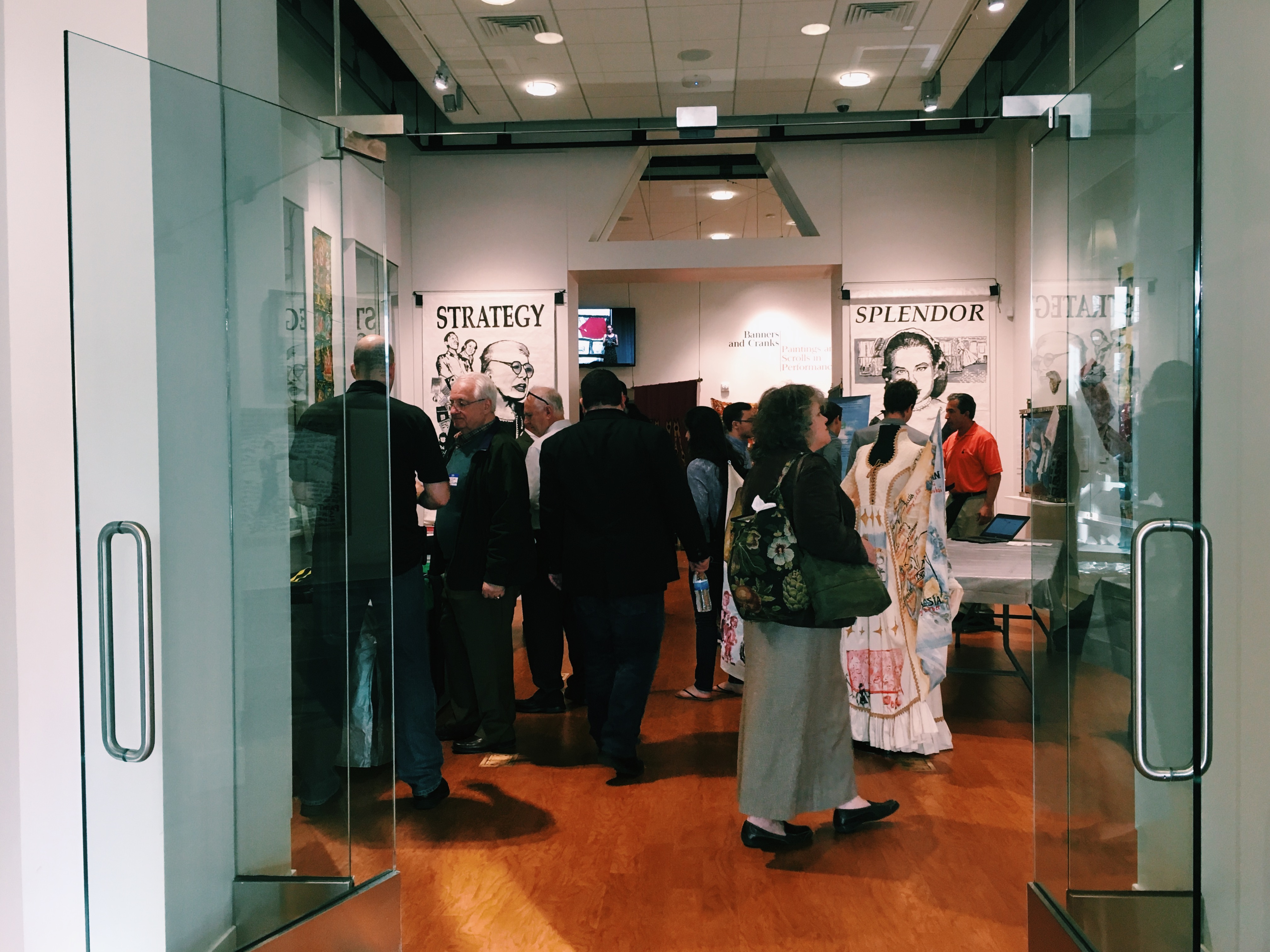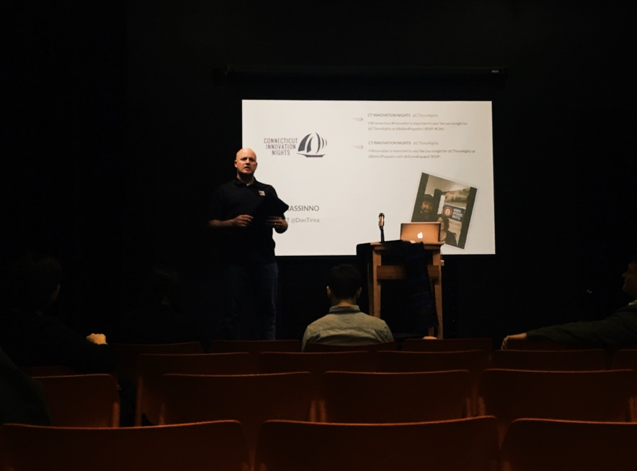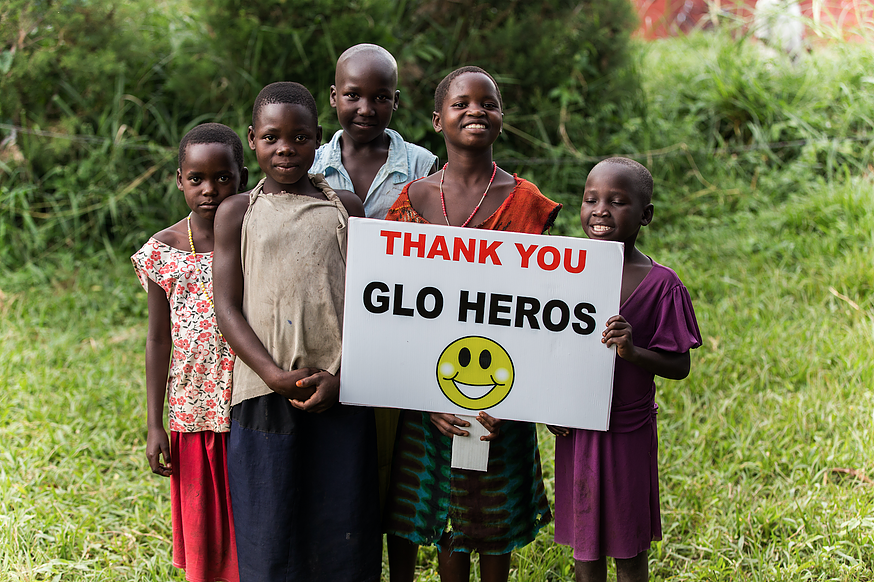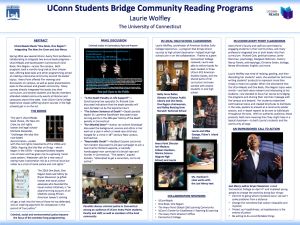By Mackenzie Rafferty
Monday, April 10th, was the first new product showcase for Connecticut Innovation Nights. This event was Connecticut Innovation Nights first event in a projected series of events dedicated to highlighting innovation for local start-ups and entrepreneurs. This event was very promising for Angelina Capalbo, who was inspired by the success of Mass Innovation Nights, out of Massachusetts. Capalbo modeled the structure of the night off of the wildly successful formula of her predecessors in Massachusetts. Ultimately, this event aims to feature and emphasize local businesses and entrepreneurs to boost exposure for these noteworthy locals.

This event, was co-collaborated with our office, the office of Public Engagement and hosted at the Ballard Institute and Museum of Puppetry. The doors opened at 6:00 pm, and lasted well after 8:00 pm that evening. The Ballard was adorned with its beautiful puppetry displays that highlighted the creative and innovative in the room. In addition, refreshments were offered from Love Art Sushi, Subway, Insomnia Cookies, Gansett Wraps, and Wing Stop.
The event involved ten entrepreneurs, all of whom lined the Ballard with tables, prototypes, and posters to help display their products. The products varied and all found their special niche in the entrepreneurial market. Out of the ten entrepreneurs, four were able to pitch their products on stage in front of an audience. These four were voted on prior to the event, and had the wonderful opportunity to describe their product and tell their unique story in three minutes or less for the event goers.
The first of these products to be pitched was B2 Products. They pitched one of their various products called the Mobility Assistance Sling (MAS). Their slogan, “innovation you can count on,” is highly representative of the nature of their products. They design products that aim to solve problems encountered by Public Safety and Healthcare professionals. Their slings help both patients and providers as acting as lifting aids for patients who are unable to get up and need assistance. Their brochure noted that this sling aims to “reduce back injury through improved lifting ergonomics…safer and more dignified for the patient than improvised lifting aids.” These products are geared mostly towards fire-rescue and EMS agencies, nursing and medical personnel, rehabilitation services. The slings work best for elderly, disabled, and obese patient care where lifting may be problematic for both the patient and provider.The second product to be pitched was the Badger Medical collar by CEO and inventor Timothy Andrew Kussow. The Badger Medical Collar is a bariatric immobilization/extrication collar. Disposable, easy to use, and lightweight, this collar is designed for patients who anatomically cannot fit in the traditional cervical collar. This product is a tear-to-fit product that allows for quick mobilization. As outlined on their brochure, the product “is intended to support cervical spine in a neutral position during transportation, in combination with other cervical and full body immobilization devices.”

Third, Mark Keeley from OBVIA pitched his “superior wind turbine rotor blades & semi-shroud.” Their patented blades are “lightweight, energy efficient, cost effective, environmentally friendly, visually appealing and scalable.” Their team consist of the two Keely brothers who combined have over sixty years of wind energy experience as well as design engineering and finance experience. Their product was the winner and judge’s favorite of the CT Next Entrepreneur Innovation award from last May. Additionally, they were featured in the Hartford Courant’s startup story July 6th, 2016.
Last to present was the company RecordMe, who’s business model is focused around a hassle-free recording which allows for artists to make more of a profit while making and playing their music. Their motto is, “record anything, record anywhere.” Their recording device allows for artists to reserve a box that is built and shipped to them. After the event, the box is shipped back to the company where they mix, master, and distribute the recording to everyone who placed on order—the artists only pay for the recordings they sell. They offer various boxes and ways to purchase, or lease them. They offer home boxes, studio boxes, and professional boxes. Based in Torrington, CT, RecordMe has found a unique niche to the local music scene that also transcends far beyond the CT boarders.
These four products and businesses were simply a fraction of the innovators and products featured at the event. The turnout was promising for the future of Connecticut Innovation Nights. Ultimately, this evening spotlighted the immense potential this event has for Connecticut and local entrepreneurs. These events tap into the power of social media and networking to foster a community of inspired local innovators to connect, pitch their ideas, and bolster a greater following for their businesses and products.

